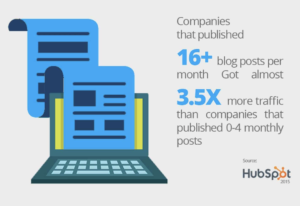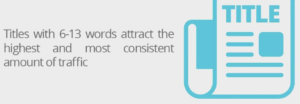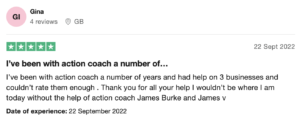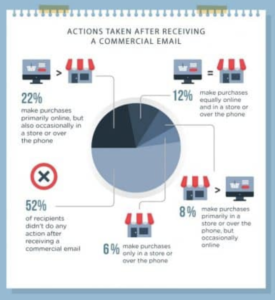5 principles for staggering copywriting in 2024
There is one thing that you should understand about copywriting in 2024 before you read on.
If you don’t do it, copywriting in 2024 is hard.
And if you don’t like this statement.
You won’t like copywriting.
It’s something that all great copywriters understand.
And it’s something that they all do.
It’s as simple as it is important.
When you get it right, you’ll:
-
Be able to write adverts and articles that make you more than £15,677 each.
- Increase the profitability of your business
-
Write effective articles that talk to your target market.
-
Have over 103% more people read what you write.
-
And be proud of the work that you do.
So what is this mystic principle?
Copywriting is selling.
If you write without purpose, there are going to be fewer people reading your copy.
You have to get it right.
And there’s one more thing. 98% of all marketing employees say that written content is their most used type of content. So you’ve got lots of competition.
The problem is, most of the people that are writing copy, haven’t had any training.
2 out of 3 marketers admit they’ve never had any formal training.
Which means there’s a whole lot of money left on the table.
Getting the copywriting on point has never been more important.

Copywriting in 2024
When copywriting in 2024 goes wrong
When I first met John he was working hard on his website.
He published articles on various topics within his sector. John was a passionate writer and had a loyal following of customers.
The problem was John wasn’t familiar with the art of copywriting.
John decided to write a series of articles promoting a product he had recently purchased. He wrote with passion. He spoke about the product, describing its features, but no one bought it.
In fact, over the next month, the opposite happened. The web hits and revenue both dropped by over 70%.
Confused and disappointed, John realised that he had made a mistake and he couldn’t fix it alone. That’s when he hired a coach.
He did his research and figured out what kind of coach would be right for him.
When he met with the coach he pointed out the drop in performance on the website.
They both realised that he didn’t know much about copywriting.
That’s when the coach taught him a few things about marketing. He promised to show John the 5 copywriting principles for 2024.

Writing blogs and articles
The changes John made to his copy
John made a few tweaks to his writing style. His coach taught him to:
-
Focus on the benefits. Rather than describing the features of a product, John learned to focus on the benefits. He learned to identify his readers’ pain points. And how to show them that the product could solve their problems.
-
Use persuasive language. John learned that using persuasive language could make a big difference. It improved the effectiveness of his writing. He started using strong verbs, emotional language, and powerful words. It started to grab his readers’ attention and persuade them to take action.
-
Keep it simple. John learned that using simple language was key to making his writing attractive. He started using short sentences. He introduced bullet points, and clear headings too. It made his writing more readable and engaging.
-
Use social proof. John learned that using social proof could help build trust with his readers. He started adding testimonials and case studies. It made them more likely to buy the products he was promoting.
-
Have a clear call to action. John learned that having a clear call to action was essential to getting his readers to buy. He started including clear, specific instructions on what his readers should do next. Things such as “Click here to buy now” or “Sign up for our newsletter today.”
After implementing these principles, John started to see a dramatic improvement. His web hits and revenue both went through the roof. His readers were more engaged and more likely to buy the products he was promoting.
John realised that learning the principles had been the key to his success.
From that day forward, he made sure to apply the 5 copywriting principles to his writing. After that his website became a thriving success.

Copywriting in 2024
The 5 principles
John saw dramatic changes. His web hits improved by over 1000%. And his revenue grew by more than 3 times.
How did he make it work?
By learning these 5 principles, and like any good student, he implemented them.
The wait is over.
Here they are, the 5 copywriting principles to help you thrive in 2024.
1. Write a heavy-hitting headline
A headline is the first thing that your reader sees. It’s like the cover of a book or the icing on a cake. And like those things, your headline needs to be enticing, captivating, and irresistible.
But here’s the thing – many small business owners don’t do much research when it comes to writing headlines.
They throw something together and hope for the best.
And that’s a shame. A weak headline can lead to low engagement, click-through rates, and low conversions.
And who wants that, right?
So let’s go granular.
A strong headline should be clear and concise. It should convey the main benefit of your article, product or service.
You should write it in a way that grabs your reader’s attention and makes them want to read on.
It should be unique, specific, and speak to your target audience.
When it comes to copywriting in 2024, the headline is the most important element. It’s the first impression you make on your potential customers, and it sets the tone for the rest of your copy.
In fact, studies have shown that up to 80% of readers will read your headline, but only 20% will read the rest of your copy. That’s why it’s crucial to make your headline count.
Even though it’s so important, many marketers rush the headline. The headline is not something to rush like it’s a minor detail.
The truth is, a weak headline can be a major obstacle to your success. It can prevent your target audience from engaging with your content. And it can hurt your bottom line.
If you do a poor job with the headline, the reader won’t read the rest of the article.
So, what makes a strong headline? Well, as I mentioned earlier, it needs to be clear, concise, and convey the main benefit of your product or service.
Having persuasive language is also crucial. Your headline needs to persuade your audience to read on. The language you use should be compelling and engaging. It should speak to your audience’s desires or pain points.
For example, let’s say you’re writing a headline for a fitness product. Instead of a generic headline like “Get in Shape,” you might use more persuasive language. For example “Transform Your Body and Crush Your Fitness Goals in 30 Days!”
This headline uses action-oriented language. It speaks to the reader’s desire to improve their fitness level.
Another reason why persuasive language is important is that it creates urgency. By using words like “now,” “today,” or “limited time,” you can create a sense of urgency. It will encourage your audience to take action.
Adding numbers to your headlines can make a big difference as well.
Here’s one of our headlines:
It uses numbers to grab attention.
We also made the title relevant to what’s going on in the world right now. Then added the current year to make it even more relevant.
A great headline will also contain strong verbs, emotional language, and powerful words.
And titles with 6-13 words attract the most traffic.

How many words to use in your headline
Headline Writing Tools
So, how can you write great headlines with persuasive language? There are a bunch of tools and resources available to help you.
One of the most popular tools is the CoSchedule Headline Analyzer. This tool allows you to test the effectiveness of your headline. It analyses factors such as headline length, emotional impact, and word balance.
And don’t forget about good old-fashioned brainstorming. Take some time to think about your target audience and what they’re looking for. Write down a list of potential headlines and test them out on friends or colleagues to get feedback.
In summary, persuasive language is essential when it comes to writing great headlines. Use compelling, engaging language that speaks to your audience. That way you can create a sense of urgency and persuade your readers to take action.
Use tools like the CoSchedule Headline Analyser. Then you can fine-tune your headlines to make them as persuasive as possible.
And don’t forget about the importance of making your copy unique.
With so much content out there, it’s essential to stand out from the crowd. Your headline should be distinctive and attention-grabbing. And make sure it’s still relevant to your product or service.
A strong headline is essential for effective copywriting in 2024. It’s the gateway to your content, and it can make or break your chances of success. It can also increase your conversion. So take the time to craft a headline that speaks to your audience. Then sit back and watch your engagement and conversions soar.
2. Keep them interested
The opening paragraph is your opportunity to keep them interested.
That’s why you should write every line in your opening paragraph with a clear goal.
Make the reader want to read the next line.
It’s like that in the best films.
Where you don’t know what’s going to happen next.
And your sat on the edge of your seat.
Great copywriting accomplishes the same thing.
So build a sense of curiosity.
Create a bit of tension and apprehension.
And keep your reader interested.
You also need to introduce your topic or theme in a way that’s interesting and engaging. It doesn’t matter what you are writing about. It could be the latest fashion trends or sharing tips for improving productivity. Either way you need to hook the reader in with a compelling opening.
One way to do this is by using a story or anecdote that relates to your topic. For example, let’s say you’re writing an article about the benefits of meditation.
You might start with a personal story.
A story about how meditation helped you overcome stress and anxiety. A great storyteller also gets the interest of their reader.
In summary, the opening paragraph of your article is your chance to make a great first impression. So write each line with the goal of keeping the reader interested. And introduce your topic or theme in an engaging way. It’s a simple way to get attention when copywriting in 2024.
That way you can hook your readers from the beginning. So take the time to craft a strong opening, and watch as your readers stick around to read the rest of your content.

Copywriting in 2024
3. Make it readable
It’s important to make your copy readable. Your audience is more likely to engage with it if they can understand it.
If your writing is hard to follow, your readers may lose interest and move on to something else.
And if your copy is clear and concise, you’ll be able to hold their attention and convey your message.
Readability is also important for building trust with your audience. If your writing is confusing or filled with errors, it can make you seem unprofessional.
But it’s a different story if your copy is well-written and easy to understand. Then your readers will be more likely to see you as an authority on your subject.
Making your copy readable can help you reach a wider audience. People from all walks of life read content online. But not everyone has the same level of education or language ability.
So use simple language, short sentences, and other readability techniques. Then you can make your message accessible to a wider range of readers.
Let’s start with a simple tip to make your copy readable.
Use fewer adverbs.
An adverb is a word that describes a verb (he sings loudly). Or an adjective (very tall), or even another adverb (ended too quickly). Sometimes an adverb can even describe a whole sentence. (Fortunately, I had brought an umbrella).
They often end in –ly, but some don’t (such as fast).
Adverbs tend to clutter up your writing and slow down the pace. Instead, focus on using strong verbs and nouns to get your point across.
Another key aspect of readability is using active voice over passive voice. A passive voice can make your writing feel dull and lifeless.
Using an active voice adds energy and impact.
Active voice is when the subject of the sentence performs the action. Passive voice is when the subject receives the action. In active voice, the subject is the “doer” of the action.
Whereas in passive voice, the subject is the one being acted upon.
For example, “I wrote the email” is in active voice.
That’s because the subject (I) is performing the action (writing the email).
If I said, “The email was written by me” it would be in a passive voice.
That’s because the subject (the email) is receiving the action (being written).
Use simple language, too. You want your audience to understand your message. They shouldn’t need to consult a thesaurus for every other word.
Short sentences are an excellent way to keep your readers engaged. They create a sense of urgency and momentum. A series of short, punchy sentences can make your copy feel like a thrilling ride.
What’s the conclusion? Make your writing easy to read.
Clear, concise writing is important to hold your reader’s attention.
Use straightforward language and avoid complex sentences. Remember, your goal is to communicate your message.
The goal isn’t to impress your readers with your vocabulary. That’s not how copywriting in 2024 works.
So use strong verbs and nouns, an active voice, simple language, and short sentences. Then you’ll have readable copy.

4. Make the point
Up to this point, you’ve got an eye-catching, heavy-hitting headline. You’ve caught your reader’s attention with that for sure.
Then you’ve piqued their interest. You’ve built some anticipation and got them sat on the edge of their seat.
And your copy is readable. It’s breathable and flows well.
It’s time to make your point.
Here are some tips that can help you stand out.
Let’s start with “Lead with Why.”
That means starting your copy with the reason why your audience should care. Don’t bombard them with facts and features. Start by explaining the benefits and the problem your message solves.
Good copy is always benefit-focused. That means explaining the result of what you do, instead of explaining how you do it.
Customers don’t care if a mechanic “runs a 100-point touch service” when their car is in the garage. They want the benefit. Which would be “your car is 64% less likely to break down.”
By leading with “why,” you’ll be able to hook your reader’s attention and keep them engaged.
Another tip is to paint a pretty picture that backs up your point.
Paint a pretty picture
People respond to stories, so use a narrative approach to engage your readers. It’s much more likely to hit emotion. Use vivid descriptions that allow your audience to visualise your message.
That way, your audience can connect with your message on a personal level. It’s more memorable than plain facts.
Adding data can also be a powerful way to back up your message. People tend to trust numbers and statistics, so use them to support your arguments.
Data points can help you build credibility and make your message more convincing.
But, don’t overwhelm your readers with too many numbers, keep it simple and easy to digest.
In summary, lead with why and paint a pretty picture. Use data too. Those things can help you make your point when copywriting in 2024.
By using these techniques, you’ll be able to engage your audience. You’ll also be able to get to emotion, back up your arguments with data, and provide a clear, concise message.
Remember, your goal is clear communication.
So make sure your message is easy to understand and connects with your audience on a personal level.
5. Close the copy
Closing your copy well is important. It doesn’t have to be flashy. I wouldn’t try and be clever. Instead, be clear and make it simple. Your reader should have clarity on what you want them to do next.
Here are some tips to help you end your copy on a strong note.
First, summarise your key points towards the end of the copy to bring it all back full circle.
It helps to remind your readers of the most important information. It will also reinforce your message.
By summarising, you also help them remember what you’ve said.
It’s also essential to add some inspiration at the end to motivate your readers. That could be a quote, a personal story, or a call to action. Your readers need to feel inspired and energised by your message.
Inspiration is a powerful motivator. It can help people take action and remember your message.
And give your readers a clear call to action. Tell them what to do next and make it easy for them to take action.
Whether it’s signing up for a newsletter, buying something, or sharing on social media. A clear call to action can make all the difference. Make sure it’s easy to understand and straightforward. Then your readers know exactly what to do next.
In conclusion, summarise your key points. Add inspiration, and give a clear call to action.
They are essential elements for closing your copy.
By doing this, you can leave a lasting impression on your readers. It might motivate them to take action.
It could even create a sense of completeness in your message.
Remember, your goal is to inspire action and create a positive impact. Make sure your close is strong and clear.

Getting the call to action right
Conclusion
That’s a wrap. And now you understand the difference that good copywriting can make in 2024.
Writing good copy can make you £15,677 per article. Like John, who started off by leaving thousands on the table.
Then he made a few tweaks to his writing style.
He focused on the benefits rather than describing his product.
And used persuasive language.
Then he worked out how to make his writing simple and started to add social proof and testimonials.
And he understood that copywriting is selling.
But most of all, he followed the 5 principles.
1. Write a heavy-hitting headline (using some of our headline writing tools)
2. He worked on keeping his audience interested.
3. His copy became much simpler. He made it readable.
4. Then he worked on making his point well.
5. Before finishing off each article with a great close and call to action.
We saw his web hits improve by over 1000%. And his revenue grew by more than 3 times. The work he did on his marketing helped him earn his first million.
How did he make it work?
By learning the 5 principles, and like any good student, he implemented them.
If you’re looking at this thinking “I can never do this on my own,” we get it.
What if you’re already adamant that you want to work with us?
The rest is up to you now.
It’s time to take action and make this year the best one yet.





